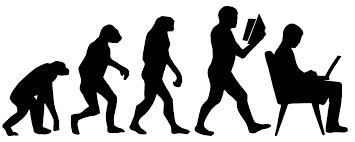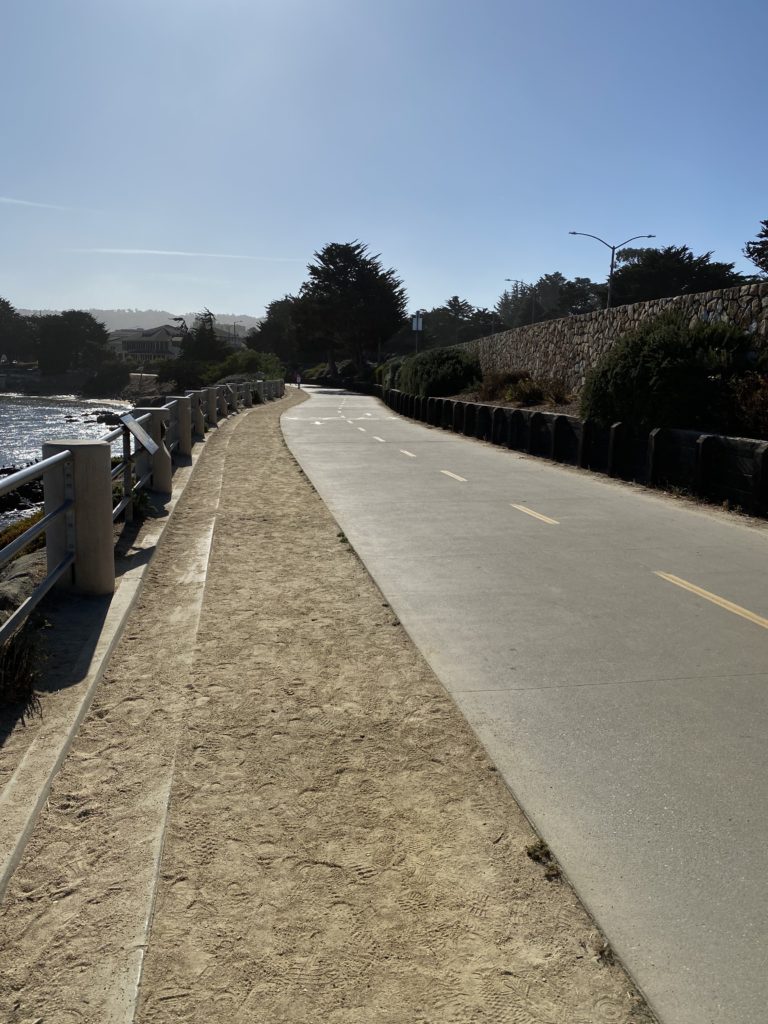1800 Words

Initially, our ancestors began using their opposable thumbs to make basic tools like tying a rock to a stick to add momentum when hitting a predator or prey. Eventually, our ingenuity led us to build the machine within which we live. For those of us privileged to live inside such a built environment, most find that it meets their needs (water, food, warmth and dryness, protection, etc.) and then much more. However, it is easy to be seduced into the assumption that the structure which we have made is optimal for our bodies, and for how our brains are wired. Upon closer examination, it becomes apparent that this structure has to be a compromise between what we can build that conforms to our needs, and how we can conform to this structure’s framework. The framework works for us, but we also work for the framework.
We are just beginning to comprehend the true costs of the compromises contained within our social machine. A common example is that we have now come to appreciate the detrimental effects of sitting for long periods after having established circumstances where many people sit to work going back 3 or 4 generations. Perhaps 95% of urban dwellers only need to go back 4-5 generations to find ancestors who lived and worked on native ground. Except for a very select few, all of our ancestors lived in an immediate relationship with the natural ecosystem 10-20 generations ago. See Anthropocene for further discussion on this topic. Among its other attributes, our built environment is a longitudinal/trans-generational study in the long term effects of making an animal sit most of the time.

Although there are profound benefits to inhabiting this built environment, its ramifications for our health are worth examining. Furthering our wisdom regarding our compromises with this man/machine interface facilitates making choices on how we do those things that we must do that stimulates engagement of human attributes that might otherwise be sidelined, with positive consequences for our health and well-being. It is very challenging to remember that we live in now rapidly changing machine, rather than “reality”. This trance-like state of “realness” makes it challenging to distinguish innate functions from accommodations to the constraints of our built environment. There is much still to learn by comparing how we live to what we know about how our ancestral lineage lived, as well as studying our nearest relatives in the animal kingdom. As we gain experience, we can better integrate innate human structures and functions in how we do what we do, as well as influence design decisions in the development of the civil engineering construct within which we do so.
The best way to explain this further is to look at a few examples. This list is far from complete, and it is likely that there are many more examples we have yet to notice:
FLAT SURFACES
PROBLEM: The leveled urban habitat we operate within is a recent innovation, which did not exist for almost all of our ancestors until just a few generations ago. A significant advantage to flat surfaces is that we don’t have to think about what we are walking on – we can focus our attention on something completely different while we move about. This is also a significant problem. We can become so detached from our physical surroundings that we will step into traffic while looking at our phones. Being able to easily move about while disassociated from the feedback offered by our bodies facilitates the use of marginally adequate, but ultimately degenerative, movement patterns which will likely present as joint pain and disease (often Arthritic) many years later. Flat surfaces disable our connection to the innate automaticity’s our ancestors evolved for optimized bipedal gait. These automaticities integrate information from our vision, sense of balance and position of the body, movement of the body, and sense of the ground under the feet. Continually walking on flat surfaces drives us towards integrating the least amount of this information needed to get where we are going. Essentially, “If you don’t use it, you lose it”. Flat surfaces integrate well with our evolved capacity to use our Locomotive Core as a stable base for manipulating tools. However, over time our ability to integrate this sensory information with stance and gait will degrade, or never develop.
The best material we have discovered with which to construct flat surfaces is Concrete, which is easy to level and extremely durable. Concrete’s hardness is a liability for our soft organic bodies which have evolved to efficiently traverse soft, coarse terrain. Coarse natural terrain disperses the higher frequency pressure waves generated by our foot strike (the lower frequency waves optimally get collected by our bodies and returned to the next step). Concrete reflects the higher-frequency component directly back into our bodies, where the energy is diffused by our joints, irritating the connective tissue, and potentially leading to inflammation and degeneration of our load-bearing articulations.
Conversely, modern Playground design integrates rubberized, shock-absorbing surfaces to minimize impact injuries as children trip or fall from play structures. While there is an obvious immediate safety advantage to insulating the body from impact, there is a less obvious developmental hinderance implicit in soft surfaces. Without adequate push-back from the ground, the tensegrity dynamics of our core cannot fully calibrate. This is also true with wearing shoes with excessive shock absorption. Our Core is designed to calibrate its tensegrity dynamics based on the interference between our bodies and the ground. This is deleterious for all bodies, but especially for a growing child, for whom the regenerative aspect of cell function is operating in high gear.

RESOLUTION: An example of how this can be resolved is the use of compacted gravel for walking paths. There are new paths being built that include an Asphalt part for biking and compacted gravel for walking. There are engineering issues to be resolved before this can be widely adopted (The new San Francisco Mass Transit Terminal design included crushed stone paths which had to be redesigned as they failed within a matter of months).
Wear a range of footwear.
Open-toed shoes that allow the big toe to point in the direction of travel are best.
Use the minimal amount of shock absorption possible.
When walking on dirt trails use a Paleo Shoe. When walking in a museum with concrete floors use a shoe with some padding.
When possible choose the dirt or grass option over asphalt for walking or running.
When possible choose the Asphalt over Concrete (Asphalt has much better energy absorption that concrete).
When possible walk barefoot. There is more discussion on footwear here:
FOOTWEAR
STAIRS
PROBLEM: Although our ancestors spent a great deal of time going up and down hills, the rough ground they traversed was ideal for their feet. Stairs are not designed for most sizes of our feet. If we designed a stair step deep enough for most feet, the rise would be so shallow that the stairway would take up too much space in a building. We resolve this by making the step as shallow as the designer thinks is acceptable, causing us to pronate our legs to enable the length of the foot to make contact with the stair.
Going upstairs we can manage this by climbing up the stairs on the balls of the feet, letting the heel hang over the edge. However, going downstairs doing this is not possible, causing us to pronate in a way that is hard on our knee joints.
RESOLUTION: Go upstairs on the ball of the foot with the heel hanging over the edge. When going down the stairs ensure that the angle of the bend of the knee is perpendicular to the direction the foot is pointing in. This lacks a graceful look, so another option is to point both feet in the same diagonal direction, in essence going down the stairs sideways.
An advantage of going up and down the stairs is our increase or variance in mass. We can use this opportunity to “dial-in” the Tensegrity dynamics of our bodies. There is a discussion of this in the Locomotive Core Exercises section.
LOW-FREQUENCY SOUNDS
PROBLEM: In nature low-frequency sounds usually indicate the possibility of threat. The pounding of a predator’s paws or rocks sliding down a hill are low-frequency sound. At a deep instinctual level, we are geared to react protectively to sudden low-frequency sound. The machines in our built environment emit sudden bursts of low-frequency sound. Dish Washers, Busses, HVAC, construction, etc. all unexpectedly emit bursts of low-frequency sound. It is therefore not surprising to find that many people in urban environments are chronically triggered into a protective reactive state which becomes normalized due to incessant triggering. The Polyvagal Theory of Dr. Stephen Porges has comprehensively illuminated this protective reaction, and how it influences our thought patterns and our bodies once triggered.
RESOLUTION: The Safe and Sound Protocol is recommended:
SAFE AND SOUND PROTOCOL
Low-Frequency Sound filtering shows great potential in this regard:
https://www.nuheara.com
FOOD
PROBLEM: Food – the energy budget –http://www.regenvillages.com/
microbiome
mycobiome
RESOLUTION:
SITTING
PROBLEM: Comfortable vs. supportive. Our ancestors sat on boards.
if one ensures that one’s body weight translates into the object upon which one sits through the sit bones.
RESOLUTION: Requires that the sitting appliance is not too soft, as thicker cushioning buffers the sit bones contact with the supporting surface. The sit bones are much more accessible if one sits high enough so that one’s knees are below the pelvis (e.g., on a stool).
There is an essay on Sitting Dynamics here:
SITTING
WORK/MONEY
PROBLEM: The character of work – working for money – abstract vs. physical labor – education – Reward circuitry (dopamine) based on immediate return for investment in action. Much more sophisticated than the Hunger Drive enabling more complex energy collecting strategies, but still requires reward trigger for investment in action – the emergence of the assembly line – deferred reward.
A good example of how we manipulate time as a linear progression is the invention of money, which enables us to convert an action into a unit that can be converted back into an action at a future time.
RESOLUTION: Community http://www.regenvillages.com/
CARRYING STUFF
backpack/orientation of the spine
EDUCATION
WE TEACH OUR CHILDREN HOW TO FUNCTION IN THE ENVIRONMENT WHICH WE HAVE BUILT
STRESS
Stress – fight-flight – financial – low grade chronic
Industrialized societies where there are influences outside the control of its inhabitants will tend to experience more anxiety, stemming from the perception of vulnerability to demands beyond an individual’s ability to respond. Inhabitant’s chronic low-grade reactive anxiety can expose them to potential manipulation, as observed in recent electoral exploitation in Western Democracies.
ABORIGINAL CULTURAL TECHNOLOGY 80,000 YEARS – hunter-gatherer